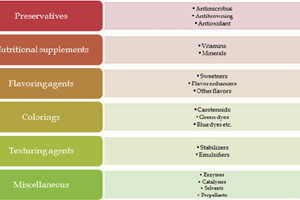In the realm of food production, the quest for texture enhancement and viscosity control has long relied on thickeners. However, the environmental footprint of these essential additives has increasingly come under scrutiny. Traditional thickeners, such as xanthan gum derived from corn fermentation, present a host of sustainability challenges, ranging from resource usage and emissions to monoculture concerns and waste management issues. But amidst these challenges lie opportunities for innovation and conscious consumer choices to pave the way towards a more sustainable future.
Resource Usage and Emissions
The production of traditional thickeners like xanthan gum often begins with corn, a crop notorious for its water and land demands. The intensive agricultural practices involved in corn cultivation contribute to habitat loss, water depletion, and soil degradation. Moreover, the fermentation process for extracting thickeners can result in greenhouse gas emissions, further exacerbating environmental concerns.
Monoculture Concerns
The heavy reliance on single crops like corn for thickener production fosters monoculture agriculture, a practice known for its adverse effects on biodiversity and soil health. Monocropping depletes soil nutrients, increases susceptibility to pests and diseases, and disrupts natural ecosystems, ultimately undermining long-term agricultural sustainability.
Waste and Pollution
Improper disposal of food waste containing thickeners compounds environmental woes. When discarded in landfills, organic matter decomposes anaerobically, releasing methane, a potent greenhouse gas. Moreover, leaching chemicals from food waste can contaminate water bodies, posing threats to aquatic life and human health.
Emerging Alternatives and Solutions
Fortunately, the quest for sustainable thickening solutions is well underway, with promising alternatives and innovative approaches gaining traction.
1. Natural Thickeners: Plant-based alternatives such as guar gum, locust bean gum, and agar-agar offer lower environmental footprints compared to synthetic counterparts. These thickeners typically require less water and land for production and often biodegrade more readily, minimizing their ecological impact.
2. Circular Economy Approaches: Embracing circular economy principles, initiatives aimed at reducing food waste and upcycling discarded materials can mitigate the environmental impact of thickeners. By diverting food waste containing thickeners from landfills and transforming it into valuable resources like compost or biofuel, these endeavors promote resource efficiency and waste reduction.
3. Consumer Choices: Empowering consumers to make informed decisions can drive demand for sustainably sourced products and encourage responsible food waste management practices. By supporting brands committed to sustainability and minimizing personal waste generation, individuals can contribute to positive environmental outcomes.
Research and Innovation
Continued research and innovation are crucial for advancing sustainable thickening solutions and improving production processes.
1. Development of New, Sustainable Thickeners: Scientists are exploring novel thickening agents derived from microorganisms, algae, and insects, offering the potential for even lower environmental impacts compared to traditional sources.
2. Improving Production Processes: Optimizing fermentation processes and exploring alternative feedstocks for traditional thickeners can significantly reduce resource consumption and emissions, further enhancing the sustainability profile of thickening agents.
While the environmental challenges associated with food thickeners are undeniable, the pursuit of sustainable solutions offers promise for mitigating their impact. By embracing natural alternatives, implementing circular economy strategies, making informed consumer choices, and fostering research and innovation, we can navigate towards a future where thickening agents contribute to a more sustainable and resilient food system.












